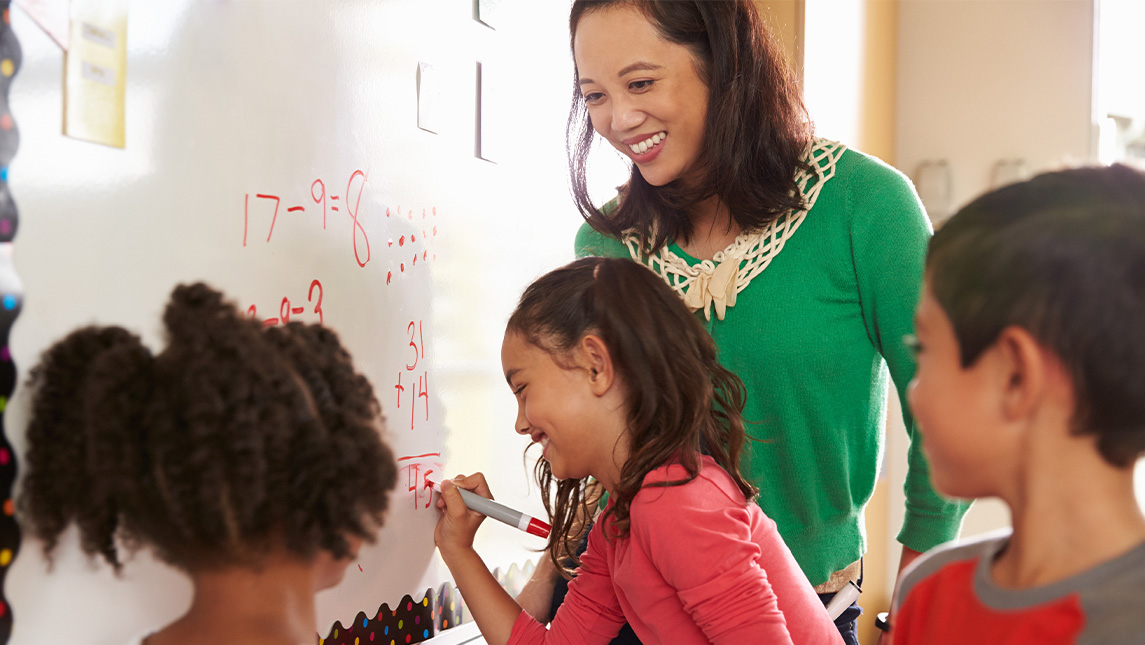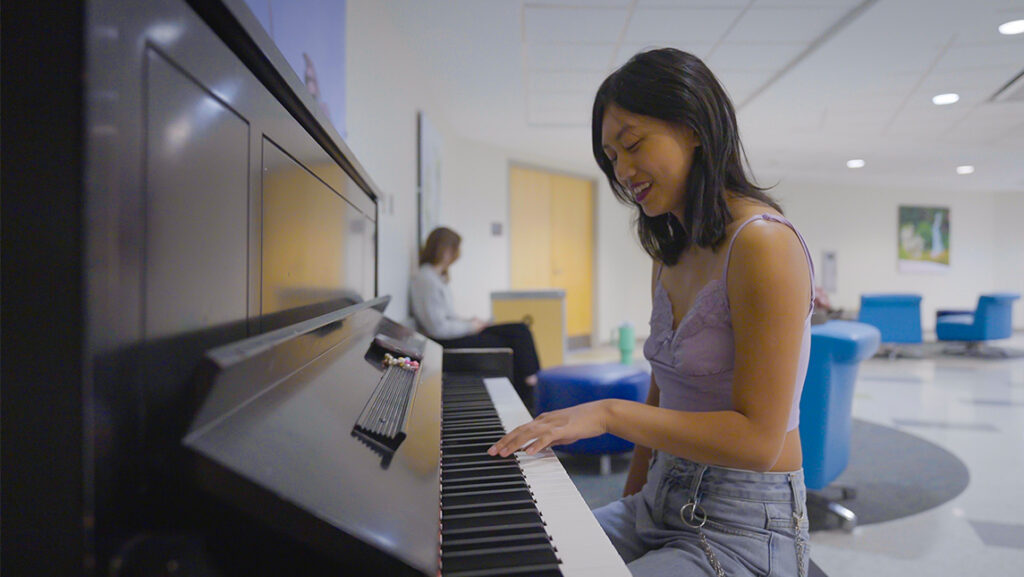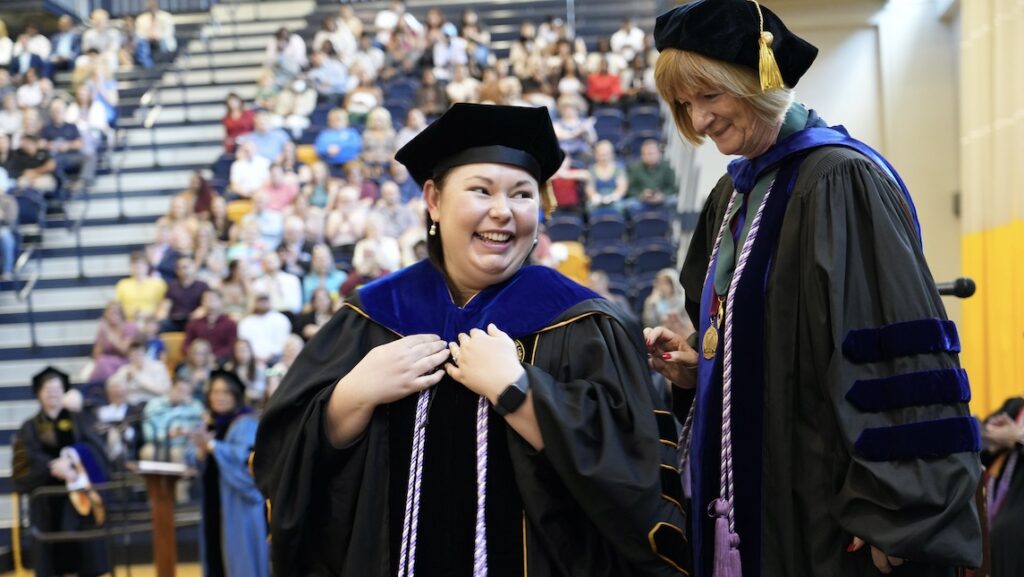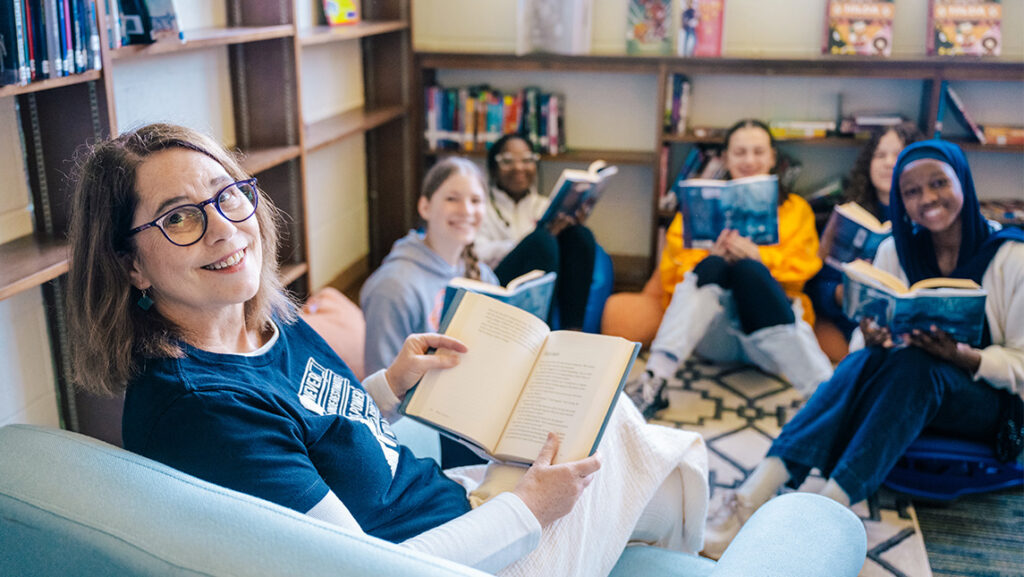It’s no secret that a teacher shortage is taking a toll on schools nationwide. A partnership with UNC Greensboro aims to help Guilford County Schools close the gap locally by getting beginning math and science teachers without education degrees off to a good start.
Math and Science Teachers of Tomorrow, or MST2, builds on UNCG’s strong teacher education expertise by targeting a growing group of people with content knowledge in math and science, who want to learn to teach. It’s a joint effort of Guilford County Schools, UNCG’s School of Education and UNCG’s Institute for Partnerships in Education.
MST2 participants do not pay tuition to pursue a Master of Teaching degree. The school system pays that for them. The program also provides coaching to support them in meeting statewide requirements to continue teaching in North Carolina. In return, participants commit to teaching in Guilford County Schools for one year for each semester they take part in the MST2 program.
For former professional engineer D’Adrin Worrell, that means committing to instructing students in high school math for two years.
When Worrell started teaching in March 2023, he began with a deep knowledge of math but not of the art of teaching.
Worrell’s goal as a first-year teacher is twofold: to be the best educator he can be and to inspire underrepresented students to enter science, technology, engineering and math (STEM) careers.
And that commitment and knowledge is exactly what Guilford County Schools’ deputy chief human resources officer Dr. Alison Coker wants from the program.
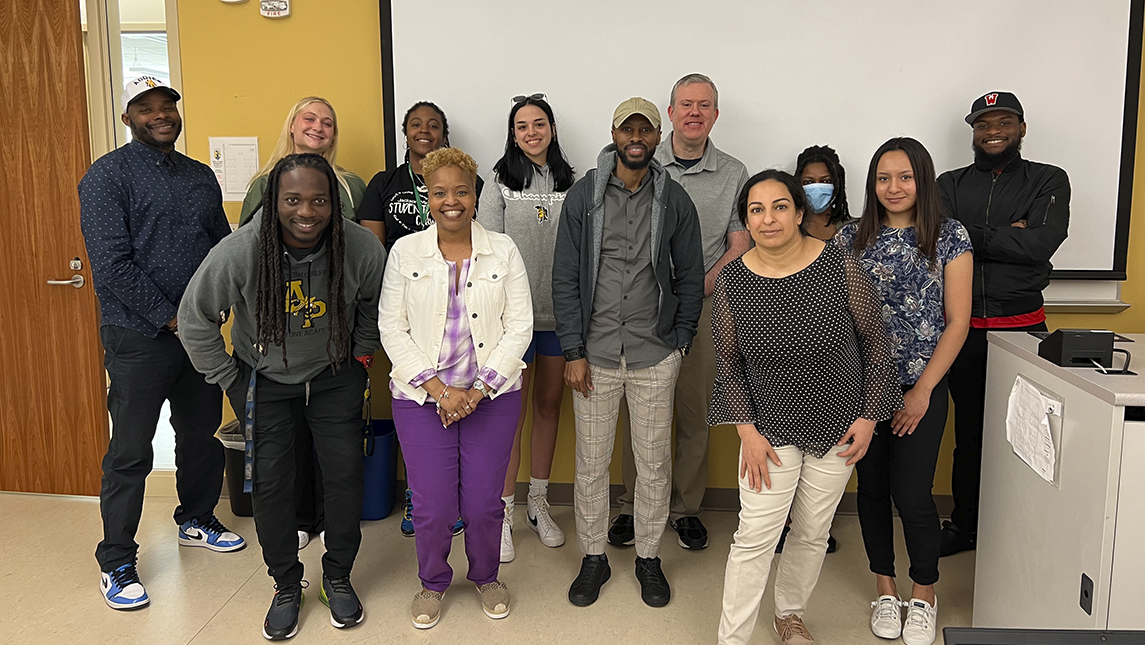
“We were facing severe shortages of math teachers, especially after COVID, when we saw a lot of teachers leaving the profession, so the program started off as a math residency program designed to recruit, develop and hopefully retain skilled math teachers with knowledge of the content and of pedagogy,” says Coker, who was instrumental in getting MST2 up and running.
In addition to Coker, others who helped pave the way for the success of the MST2 program were Dr. Beverly Faircloth, an associate professor, and Dr. Nicholas Kochmanski, an assistant professor, both in the UNCG’s Department of Teacher Education and Higher Education. Also instrumental to the effort were Guilford County Schools’ Director of Staffing, Alison Yates, and Executive Director of Human Resources, Kris Vecchione.
As Faircloth says, UNCG has had a long, productive relationship with the school system, especially in placing student teachers and interns. But she and the other partners see an advantage in going beyond that traditional relationship.
As Kochmanski puts it, “It’s about forging new pathways to teaching.” That is especially important, he says, given the pace of change in the educational landscape.
“Having these MST2 folks as part of our community has been beneficial, I think, in terms of how we teach. I’ve found that I’m a better methods instructor,” he says.
“The future of teacher education is changing, and we’re likely to see a lot of folks entering the profession with a bachelor’s degree in something other than teaching and a passion and interest in working for kids,” he adds. “They have the content expertise but don’t have the background in how to support kids’ learning.”
Meanwhile, Worrell, who now teaches at Grimsley High School, believes he is becoming a better teacher because of the three UNCG graduate courses he took this summer. He’s planning to put the knowledge to work right away.
“I’ve got a vision with my education career,” Worrell says. He wants to bring his strong math skills to bear in the classroom, build the kind of relationships with students that make a difference in their lives, and be a leader in STEM education.
“You can’t do it for the pay,” Worrell says. “You have to do it out of love for the kids.”
Worrell is among 20 participants in the latest MST2 cohort — last year there were nine — and those who launched the program see it continuing to grow, as long as the funding allows. Like Worrell, they have seen immediate benefits, says Kochmanski.
“One of the things that I’ve heard several times is that the undergraduate students really value the classroom experiences that the MST2 students bring to the coursework,” he says. “They said it numerous times: ‘It is so nice to have folks who are teaching kids talking to me about this work that I’m preparing to do.’”
The MST2 students show mutual appreciation for the undergraduates, Kochmanski adds.
“They are teaching all day long and showing up to class, and the undergraduates ask questions and bring forth issues that the MST2 students might not think about. … I think there’s a real synergy in the program.”
Story by Dee Shore
Photography courtesy of the School of Education

LEARN TO TEACH
